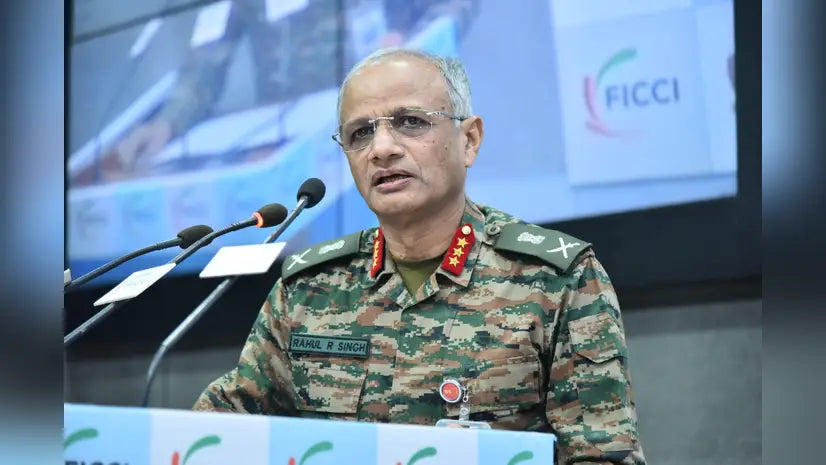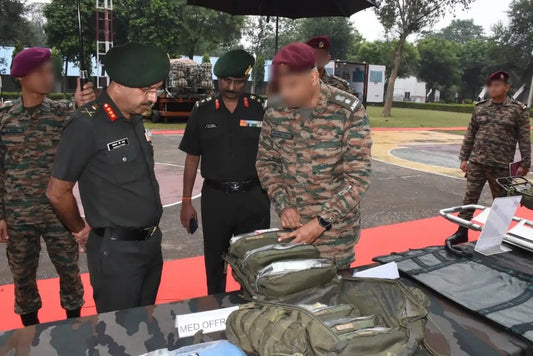China's Real-Time Intelligence Aids Pakistan Against Indian BrahMos Missile Plan

According to IDRW, Lieutenant General Rahul R Singh, Deputy Chief of Army Staff (Capability Development & Sustenance), has suggested that China provided real-time intelligence to Pakistan during the India-Pakistan conflict named Operation Sindoor. This intelligence reportedly enabled the Pakistan Air Force (PAF) to track Indian Air Force (IAF) activities, including a planned BrahMos missile strike on Pakistan's fighter jet production hub at Kamra.
At the 'New Age Military Technologies' seminar organized by FICCI, Lt Gen Singh mentioned that during de-escalation discussions between the Directors General of Military Operations (DGMOs) of India and Pakistan, the Pakistani side disclosed they were aware of specific IAF strike plans. This included the trajectory of a Su-30MKI aircraft equipped with the BrahMos-A air-launched cruise missile, which was allegedly targeting the Pakistan Aeronautical Complex (PAC) in Kamra. This site is essential for the co-development and assembly of the JF-17 fighter jets with China's Chengdu Aircraft Corporation.
The Pakistani DGMO reportedly requested the strike to be aborted during the talks, indicating knowledge of India's operational plans. Indian sources suggest this information could have been obtained through Chinese surveillance support, likely from satellite imagery or electronic intelligence.
PAC Kamra is a strategically vital facility in Pakistan's defense structure, housing assembly lines for fighter aircraft, radar, and avionics units. It plays a crucial role in the operations of Pakistan’s JF-17 Thunder and J-10C fleets. An effective strike by India could have significantly impaired Pakistan’s air combat capabilities.
Operation Sindoor commenced on May 7, 2025, as a response to the April 22 Pahalgam terror attack, which resulted in the death of 26 Indian civilians. Over four days, India executed coordinated precision strikes on Pakistani terror infrastructure and military assets. Targets included critical airbases such as Nur Khan, Sargodha, and Bholari, with India utilizing advanced weaponry like BrahMos cruise missiles, SCALP-EG air-to-ground missiles, and Spice-2000 precision bombs. Pakistan reportedly lost three JF-17 Thunders, two Mirage fighters, an F-16, a Saab 2000 Erieye AWACS, and a C-130B military transport aircraft.
Lt Gen Singh’s revelation indicates that China’s ISR (intelligence, surveillance, reconnaissance) capabilities were actively employed to monitor IAF strike formations and transmit data to Pakistani command centers. This level of cooperation highlights a new dimension in the China-Pakistan strategic partnership, directly impacting India's security strategies.
Prior social media and defense analyst observations had hinted at Chinese support to Pakistan during the conflict. Confirmation from a senior Indian military official now verifies that Beijing's involvement went beyond supplying arms or diplomatic backing. Chinese ISR assets provided Pakistan with a significant tactical edge by enabling it to anticipate IAF movements in real time.
For Indian defense planners, this revelation marks a pivotal moment. The two-front threat is no longer hypothetical. India must enhance its counter-surveillance, space-based ISR, and cyber capabilities to maintain operational secrecy. The situation underscores the need to invest in stealth technology, electromagnetic warfare systems, and satellite protection measures.
China’s growing military influence in South Asia, including its technological integration into Pakistan’s air and missile systems, signifies that future conflicts may see coordinated actions by both adversaries. As regional security dynamics shift, India will need to adjust its strategies and readiness to protect its interests in an increasingly contested environment.



















